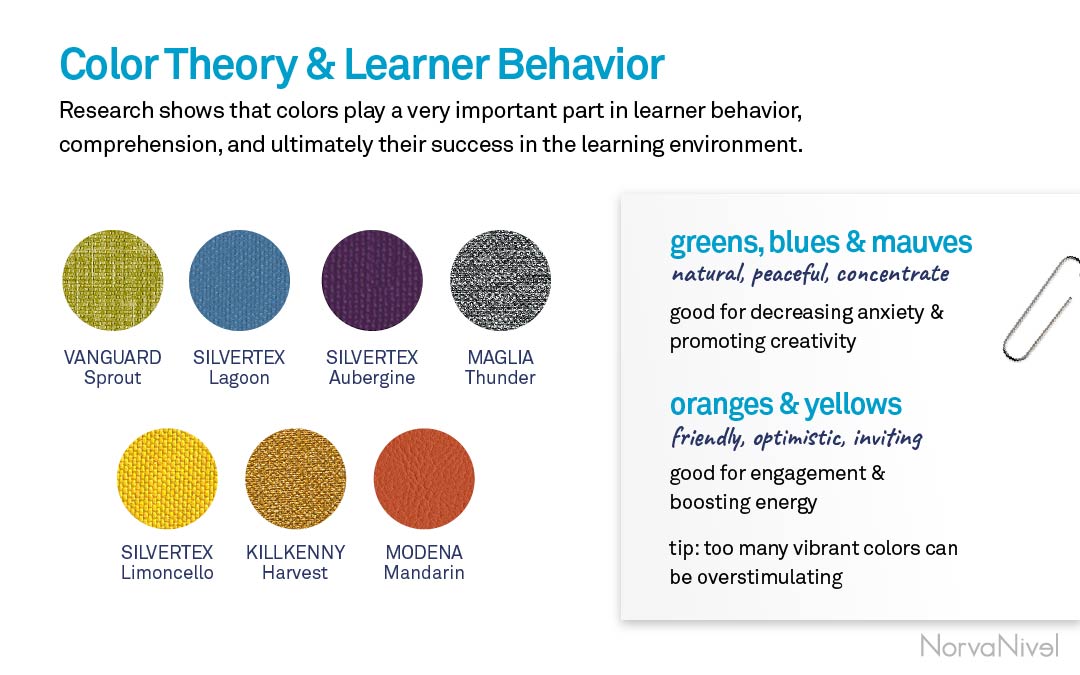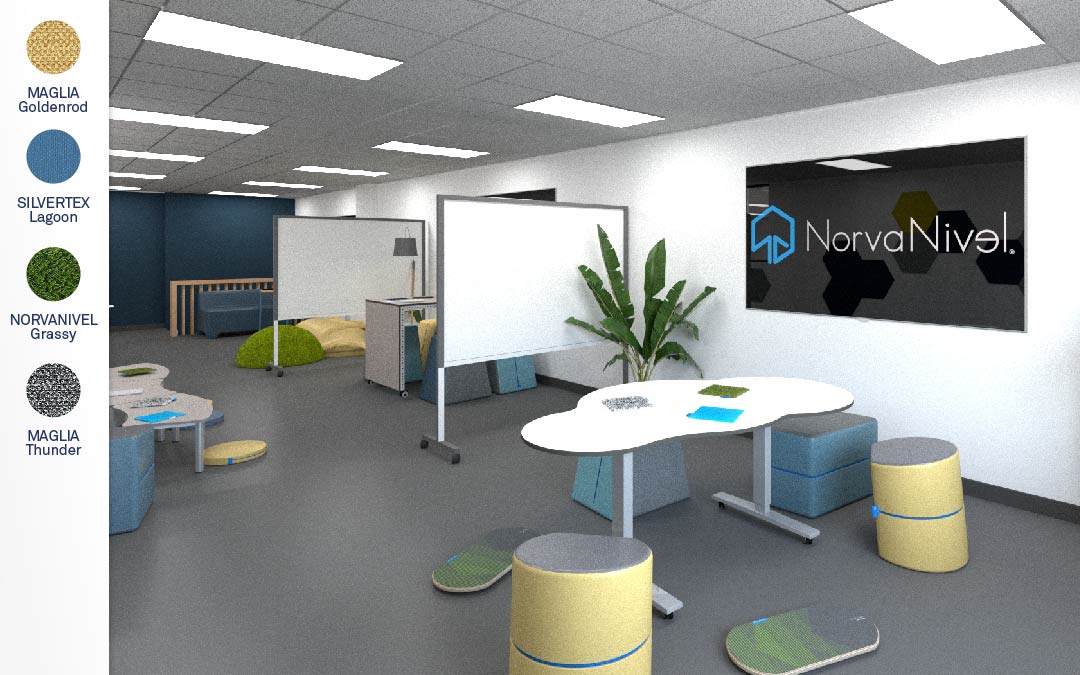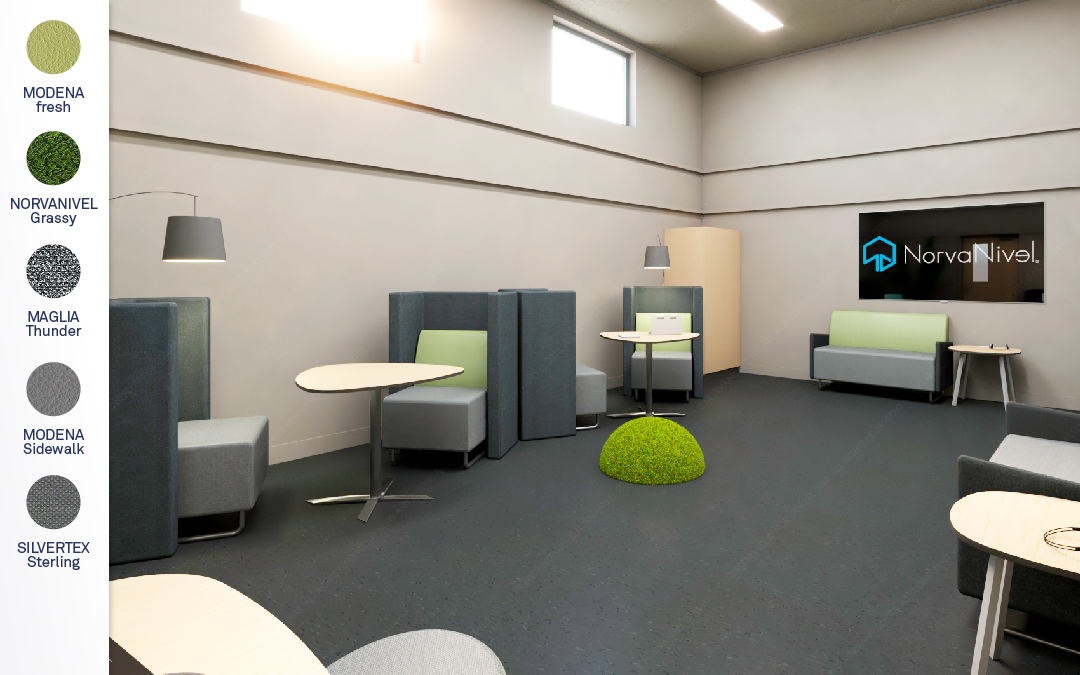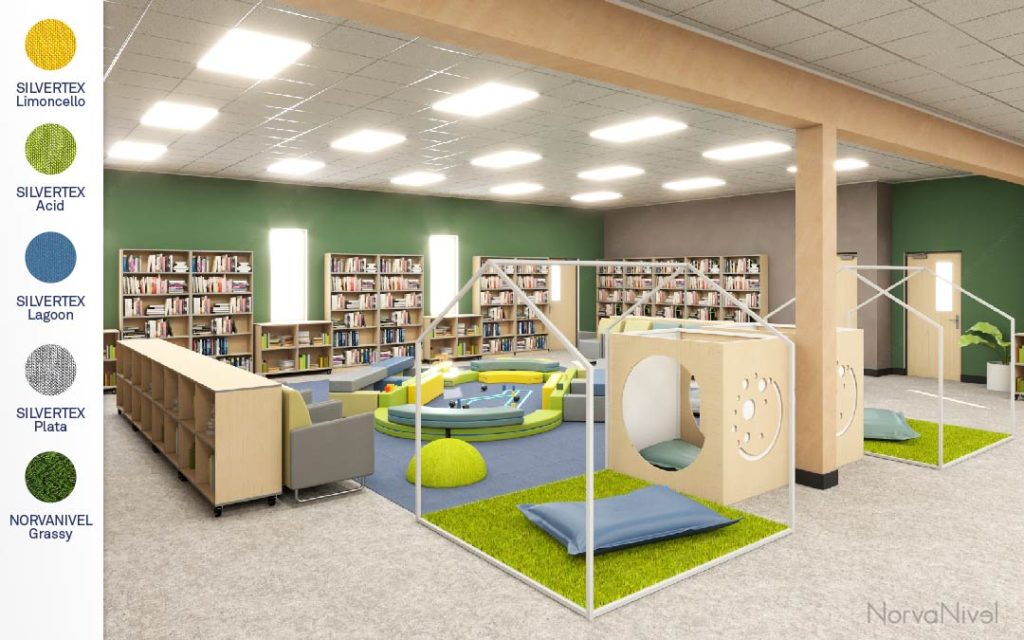Bright yellow combined with vibrant greens and soft blues to create a calming space for the young readers of the Connetquot Public Library.
Why is the psychology of color important to the learning environment?
Understanding the role that different colors play in the learning environment, from cognition to emotion, is a critical part of a successful classroom redesign. Research shows that colors play a very important part in learner behavior, comprehension, and ultimately their success in the learning environment. In this post, we aim to walk you through the benefits in choosing the right colors for your space.

What colors mean
Universities and psychologists alike have both put time into studying the effects that colors can have on learners and adults. The research behind both is relatively similar, but certain things are important to note.
Colors like yellows and oranges have a friendly, inviting, and optimistic effect. These colors instantly boost spirits and engage learners. Think of finally seeing the sun on a cloudy day – it’s the same effect. Greens and blues are generally associated with a more peaceful and natural environment and are even linked to being able to process information and concentrate better!
While elementary learners tend to gravitate more towards the yellows, reds, and oranges, high school learners tend to learn best in environments with the cooler colors: greens, blues, and mauves. The primary color wheel warmer colors tend to boost energy, excitement for learning, and mood. The secondary cooler colors tend to boost concentration, lower anxiety/hormones, and promote creativity. Beware: too many reds/oranges/more vibrant colors can actually have the opposite effect and cause overstimulation, anxiety, and aggression. Be sure to use sparingly and balance them with the other colors.

The use of muted yellows, blues and greens boosts concentration and encourages engagement in Newburgh Enlarged City School District’s middle school classroom.
Choosing the best colors for a learning environment
There are some things to consider when choosing colors for your learning environments: age of learners, size of space, balance of colors, and subjects being taught.
In terms of the age of learners, it’s important to understand the warm and cool color palettes and how they work with different ages of the learners. While you want to be mindful of school colors and incorporate them into the palette of the learning environment, those colors might best be left to a focal piece or one large item.
It’s important to balance colors, but be sure to consider the size of the space and what’s already there. Pay attention to what’s on the walls, too. Fewer colors (2-3) are best for learning environments, while larger spaces like cafeterias and media centers can handle a balance of 4-6 colors (depending on the colors). While more vibrant colors like yellows and oranges are better for creative subjects, histories, and languages, softer shades of blues and greens are better for math and science.

In the Wellness Center for Canoga Park High School, the use of soft greens and neutrals creates a comforting space for independent study and reflection.
Recap on colors in learning environments
Colors are an excellent addition to any learning environment. Different colors have different connotations, so it’s important to choose your palette with a purpose! Take into account space size, wall paint colors, and colors already existing in your space. Be mindful of the implications of the colors you choose.
This is just a surface scratch; be sure to research color psychology on your own for a more in-depth analysis of color implications! NorvaNivel loves all the colors of the rainbow and can match a multitude of hues and shades for all the primary colors. As always, NorvaNivel, and its authorized partner vendors, are happy to help with your learning environments in terms of high-quality renders and professional development provided by educators.
Got an upcoming project? Consult with our Space Specialists in a Live Design Session
Read more about color theory:
- The Secret Language of Color by Joann & Arielle Eckstut
- Handbook of Color Psychology edited by Andrew J. Elliot, Mark D. Fairchild & Anna Franklin
- The Little Book of Colour: How to Use the Psychology of Colour to Transform Your Life by Karen Haller
- The Effects of Wall Color on Students’ Attention Levels: An International School’s Perspective by Chiharu Ogita & Ms. Amy Pothong
- The Impact of Colors on Learning by Bo Chang, Renmei Xu & Tiffany Watt
- The Importance of Colors in Education by Renk Etkisi

